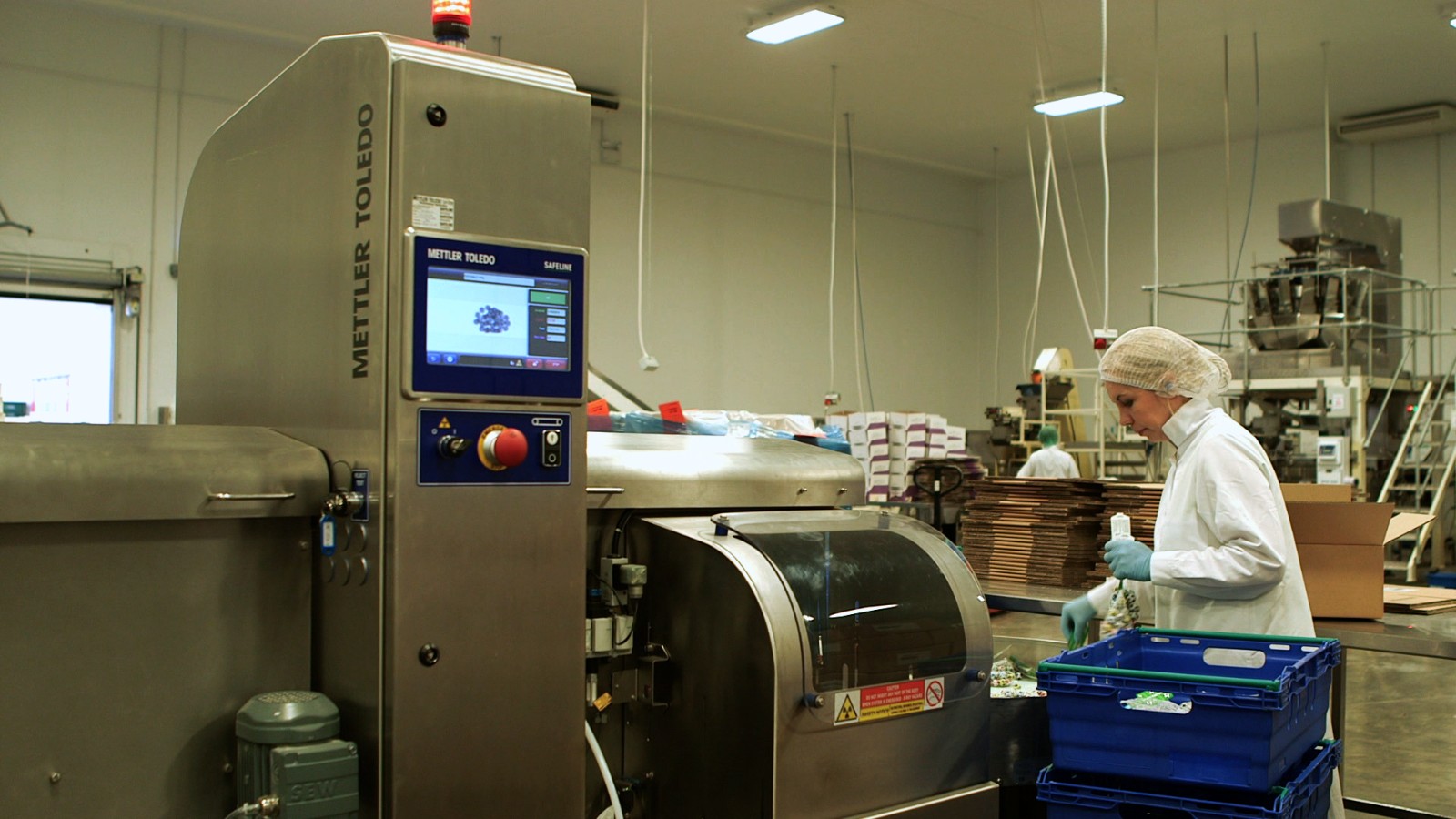By NIALL MCRORY, Global Key Account Manager, Mettler-Toledo Product Inspection Division
Contract packagers have a highly demanding role in the food and pharmaceutical supply chains, needing to be both flexible and capable. Product inspection technology can help them meet these needs, writes Niall McRory, Global Key Account Manager, Mettler-Toledo Product Inspection Division.
So many of the trends that shape today’s food and pharmaceutical manufacturing industries demand a flexible approach to packaging. For contract packers, with a customer base that might cover the breadth of these marketplaces, this calls for huge flexibility in everything they do – from their culture to the equipment they invest in, including the product inspection technology they deploy.
The growth in e-commerce has directly affected packaging formats and supply chain models, and contract packers have had to respond to that. The requirement for smaller, more lightweight but durable packaging materials, as well as the increasing trend to specify recyclable materials, has driven the demand to upgrade packaging lines to cope with a greater variety of work including multiple pack formats.
Another area where contract packers have needed to show flexibility and the ability to quickly respond is in compliance with increasing legislation around the world aimed at improving levels of product safety. It is a critical point for the brand owner and manufacturer that the contract packer must not let them down. Compliance with national, regional, global and trade standards demand not just a flexible mindset, but equipment which can efficiently handle frequent changeovers between different legislative needs, as well as capture the information required to guarantee provenance.
Choosing the right product inspection technology will help them provide the flexibility and product safety standards they need. It can help co-packers to address other challenges too.
For example, according to 2020 report, Contract Packaging and Manufacturing Packaging Operations, Trends & Challenges, by the Association for Packaging & Processing Technologies, further key challenges are in the areas of labour and counterfeiting. With the former, a shortage of skilled labour, and the rising costs of employment in general, represent a significant issue to overcome for packagers. Meanwhile, incidences of counterfeiting are rising, and this is particularly evident in pharmaceuticals.
In light of all of these challenges, many contract packagers are reassessing the role of their product inspection technology, looking to find efficient flexibility from within this critical area of their packaging lines. Some of the areas that packers can focus on to see improvement include:
Ø Product changeovers – contract packagers need to switch between jobs more frequently in today’s market. Every minute lost in downtime during a changeover is a cost, but modern product inspection systems are noted for their ease of transition between job types, often via tool-less processes that can be set in motion with the press of a button. Hundreds of product set-ups and their parameters can be pre-programmed and stored with data automatically accessible in the event of a product safety audit or recall. Indeed, similar job types can also be clustered, allowing them to be run without any changeover at all.
Ø Ease of machine use and learning through software – Most advanced product inspection systems utilize algorithms which automatically detect product changeovers. This ensures that the next products are setup correctly by fully optimising the detection sensitivities needed for continuous accurate inspection on different products. A well designed touchscreen user interface will naturally guide users step-by-step through all operations they may need to make, this increases speed of setup/adjustment, reduces the amount of training required and also reduces frequency of possible operator errors.
Ø Combination product inspection machines – while product inspection technologies such as x-ray, metal detection, checkweighing and vision inspection can all be purchased separately and individually, increasingly co-packers are seeing the value of combination machines, where two and sometimes three different technologies are integrated into a single system. As well as saving factory floor space, these combination systems also have multiple user interfaces that can seamlessly step-in to ensure all the Critical Control Points are maintained if a controller fails.
Ø Automation – this is what makes the quick product changeovers referred to earlier possible. Often able to adjust in real-time to optimise performance, most product inspection machines today have some degree of automation built-in. This increases productivity and reduces costs and time associated with human interaction with the product inspection equipment.
Ø Reduced testing frequency – with product inspection equipment such as metal detection systems, there is always a need for regular performance monitoring to ensure that you continue to gain accurate results. However, stopping production to test has a negative effect on Overall Equipment Effectiveness (OEE). Some modern metal detection systems feature a reduced testing capability, which can save more than 80% of the time previously required to stop the machine and perform manual testing, with no impact on the detection sensitivity of the metal detector. Co-packers can be in production for longer, with high quality results maintained.
Ø Faster production line speeds – every manufacturer wants to produce quickly. As such, product inspection manufacturers have responded by creating machines which can inspect and reject at throughputs in excess of 750ppm, now keeping pace with systems such as quick labelling applicators. These speed increases have been achieved without compromising the quality of inspection and the level of compliance with emerging product safety legislation.
As the food and pharmaceutical industries look to a future in which supply chains become increasingly digital, contract packers are positioning themselves for this transition too. As noted, counterfeiting is on the rise, and the ability to serialize will be vital to track and trace at an individual product level. Here, product inspection technology such as vision systems using smart cameras will be essential to success. It is yet another area where contract packers will look to product inspection providers to arm them with the capabilities their customers require, and with the flexibility that they demand of themselves.
Related report: Automation, digitalisation steer food inspection innovations















